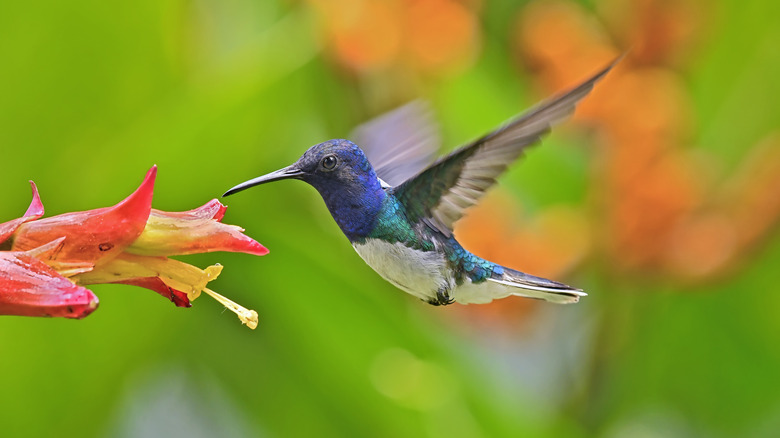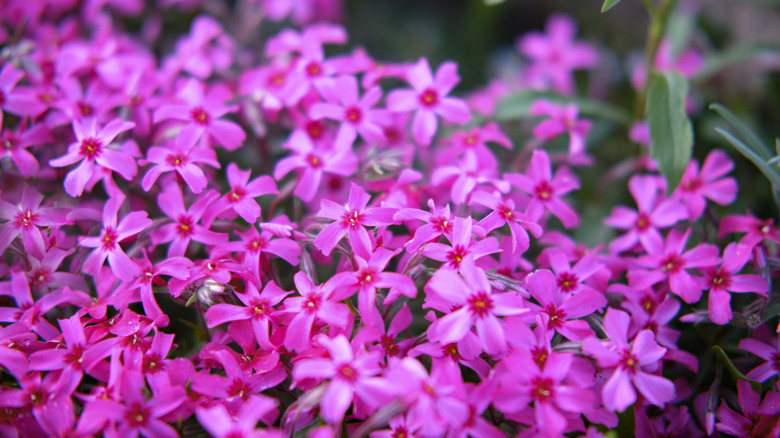The Long-Blooming Ground Cover That'll Keep Hummingbirds Coming Back To Your Garden
Hummingbirds, adored for their iridescent feathers and fascinating, fast-paced flight patterns, are widely sought-after garden guests. Look at any commercial hummingbird feeder, and you will notice a pattern; they are almost always red. That is because hummingbirds are widely known to be attracted to red flowers, as they are generally seen as a source of nectar. However, other colors, such as vibrant purples and pinks, can be effective in attracting hummingbirds, which can help pollinate your plants and create a serene environment.
If you want to draw more hummingbirds to your yard or garden, plant creeping phlox (Phlox stolonifera). This gorgeous flowering ground cover is a perennial plant native to North America. It yields striking purple, pink, blue, or white hues in mid-to-late spring. After blooming, creeping phlox produces an abundance of nectar that will keep hummingbirds flittering back to your garden for about a month. Even after its flowers die off for the season, creeping phlox's foliage will color your yard green throughout the year. There are several varieties to choose from to suit your taste and complement your garden.
Simple steps to grow creeping phlox in your garden
While any type of creeping phlox will attract hummingbirds, those with the brightest, most vibrant colors will best catch their eye. Violet pinwheels, scarlet flame, and emerald pink creeping phlox are excellent choices. Violet pinwheels are aptly named for their deep purple hue and star-shaped flowers. Scarlet flame blooms a striking fiery red and emerald pink showcases a tantalizing magenta.
Creeping phlox varieties require similar care to thrive and provide a lush carpet of blooms. It grows in hardiness zones 5 through 8. Creeping phlox will grow best in full sunlight, so plant it where it can receive about six hours of full sun per day. Each plant grows to be about 4 to 6 inches tall and spreads roughly 12 to 18 inches wide, which means the amount of ground cover you get is flexible, depending on the space you have and how much you choose to plant. Creeping phlox enjoys rich, loamy soil, so if you have too much clay or sand, you may need to supplement with compost. Newly planted creeping phlox should be kept consistently moist for about the first year until it establishes new roots. After that, you will only need to water it during dry spells. This plant is a drought-tolerant ground cover once established and it would be well-suited to turn rock gardens into a hummingbird hub.

